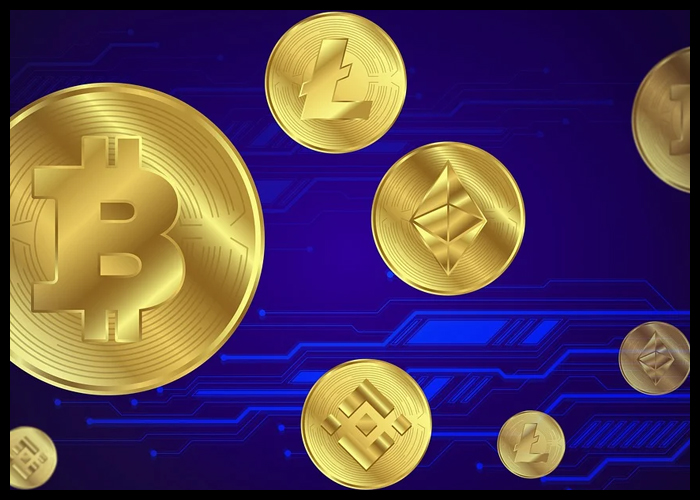Cryptos Fall
Cryptos Fall As Fed Firm On Fighting Inflationary Inferno
By RTTNews Staff Writer | Published: 1/27/2022 9:29 AM ET

Though cryptocurrency market surged to $1.76 trillion immediately after the Fed’s policy announcements, the hawkish tone in the news conference that followed spooked investor sentiment and pushed crypto market cap lower.
The hawkish tone in the forward guidance signaled a rate hike in March, and left the door open for more and larger rate increases, to tame inflation that the Fed says has been higher and more persistent than expected.
Aggregate market cap is now at $1.67 trillion, dominated 41.9 percent by Bitcoin, 17.7 percent by Ethereum and the remaining 40.4 percent by the residual altcoins.
From the point of view of risk appetite, $172 billion or 10.35 percent of the $1.67 trillion market is held in stablecoins, that do not entail volatility as much as the other cryptocurrencies do owing to its peg to a fiat currency.
Bitcoin is trading 3.5 percent below at $36,795.31, having touched a high of $38,825.41 and low of $35,690.05 in the past 24 hours.
Ethereum’s current price of $2,482.58 is after an overnight decline of 5.2 percent. Ethereum traded between $2,366.13 and $2,705.78 in the past 24 hours.
Decentraland (MANA), UNUS SED LEO (LEO), The Sandbox (SAND), Helium (HNT), Theta Network (THETA), Filecoin (FIL) and BitTorrent (New) (BTT) are the only cryptocurrencies among the top-50 that are positive on an overnight basis.
Despite the more than 3 percent dip in overall crypto market capitalization, Media has surged 4.49 percent, Metaverse has rallied 2.35 percent, Play to Earn has advanced 1.21 percent, NFTs & Collectibles have gained 1 percent, Gaming has grown 0.94 percent and Stablecoins have added 0.5 percent.
The 2.35 percent rally in the metaverse space is powered by the gains in MANA, SAND and THETA.
The scare surrounding Fed’s actions stems from the fact that interest rate increases generally lead to a fall in asset prices.
In a scenario of rising interest rates, the risk-free rate (typically the rate on sovereign treasury bonds) also rises and investors receive a higher return on risk-free investments. Therefore, the opportunity cost of holding non-interest-bearing risky assets like precious metals, stocks, cryptocurrencies, etc. also increases, leading to a fall in prices.
In addition to this, the increase in the cost of capital cuts into earnings and thereby impacts valuations.
Central banks world over use interest rates as a tool to manage inflation. As interest rates are increased, the propensity to save would increase as returns from savings would then be higher. The resultant decrease in spending would slow down the economy and with it the inflation.
The end of the monetary stimulus would mean that the Fed would no longer buy bonds and release liquidity into the system. The shrinking of the Fed’s Balance Sheet that is scheduled after the interest rate lift off commences, would reverse the bond buying and the liquidity infusion actions that the Fed had undertaken when it started its accommodative monetary policy stance.
Crypto watchers and enthusiasts would be looking closely on the Fed’s monetary policy normalization velocity. The Fed has already assured that the path would be data-dependent and actions done in a humble, nimble, and transparent manner.
For comments and feedback contact: editorial@rttnews.com
Article written by an RTT News Staff Writer, and posted on the RTT News.com website.
Article reposted on Markethive by Jeffrey Sloe

